 The health benefits of regular laughter are broadly known. Check out Laughter is the Best Medicine for a quick review.
The health benefits of regular laughter are broadly known. Check out Laughter is the Best Medicine for a quick review.
What is not so widely known, is that laughter can also immediately boost brain function and cognitive performance, especially in the area of creativity. For example, one study showed that watching 15-minute comedy video leaves you in a significantly more hopeful state. Being hopeful enables creative thinking.
Being open to laughter, generating chuckles and getting the full effects from a good laugh are all skills we can learn. One recent trend in this area is Laughter Yoga. In this approach you practice an exercise that combines laughing for no specific reason with Yoga-based breathing techniques. Not sure if it achieves the same effects as traditional laughter but it appears to. Perhaps it is even better!
Check out this video from the BBC on Laughter Yoga in London and you be the judge.
Interested to hear from readers that do laughter yoga or use other techniques to induce laughter on a regular basis for the purposes of health and improved cognitive performance.
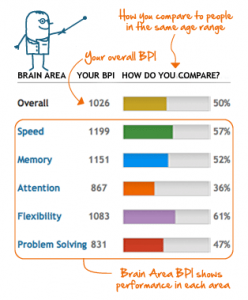 Lumosity, a leader in the growing field of cognitive training, has introduced the brain performance index. The index is an empirical and comparative measure of your ability to focus and sustain attention, processing speed, memory, problem solving skill and mental flexibility. You can set up an account and build your profile for free. If you want to know how you compare to others in your age group you need to subscribe.
Lumosity, a leader in the growing field of cognitive training, has introduced the brain performance index. The index is an empirical and comparative measure of your ability to focus and sustain attention, processing speed, memory, problem solving skill and mental flexibility. You can set up an account and build your profile for free. If you want to know how you compare to others in your age group you need to subscribe.
Like other instruments that assess your cognitive abilities, the brain performance index (BPI) gives insights into strengths and weaknesses. It should help you define goals for working on your next brain.
Interested to hear from readers that use the BPI or other assessment instruments to set goals for how best to achieve peak cognitive performance.
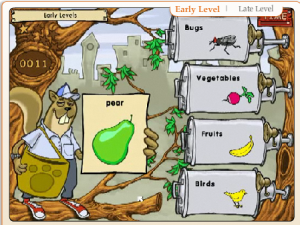 Scientific learning just published the results of a controlled study on Fast ForWord Reading Level 1. This is brain training software designed to boost the abilities of early readers such as students in first and second grade. It build skills with phonemes (sounds) and images, vocabulary knowledge and decoding and sequencing skills and even motivation for reading.
Scientific learning just published the results of a controlled study on Fast ForWord Reading Level 1. This is brain training software designed to boost the abilities of early readers such as students in first and second grade. It build skills with phonemes (sounds) and images, vocabulary knowledge and decoding and sequencing skills and even motivation for reading.
In the study over 200 first and second graders trained 48 minutes per day for 24 school days. When tested against a control group they scored nearly twice as well.
An impressive result especially since it is focused on the fundamental skill of phonological awareness. This involves recognizing, taking apart, adding and moving sounds. It supports high performance in both reading and writing.
Interested to hear from others that use specific techniques to build reading skills in children.
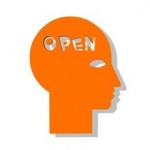 In the Next Brain blog we explore evidence-based ways to improve brain function and enhance cognitive performance. That is why the recent article in Scientific American on 5 Ways to Enhance your Cognitive Potential caught my eye. The author does a good job of reviewing the science behind fluid intelligence and argues we can actually increase IQ through targeted development efforts. There are five ways that include seek novelty, challenge yourself, think creatively, do things the hard way and network. Let’s take a closer look at seeking novelty or being open to new experiences. It is a practice with a clear impact on our brains (plasticity, dopamine for motivation, etc.) and you can build into into everyday activities.
In the Next Brain blog we explore evidence-based ways to improve brain function and enhance cognitive performance. That is why the recent article in Scientific American on 5 Ways to Enhance your Cognitive Potential caught my eye. The author does a good job of reviewing the science behind fluid intelligence and argues we can actually increase IQ through targeted development efforts. There are five ways that include seek novelty, challenge yourself, think creatively, do things the hard way and network. Let’s take a closer look at seeking novelty or being open to new experiences. It is a practice with a clear impact on our brains (plasticity, dopamine for motivation, etc.) and you can build into into everyday activities.
The authors recommend:
“Always look to new activities to engage your mind—expand your cognitive horizons. Learn an instrument. Take an art class. Go to a museum. Read about a new area of science.”
Learning an instrument and taking an art class are excellent suggestions as they have proven effects on building a number of cognitive skills. We have discussed this elsewhere on the Next Brain Blog. See for example Music Lessons Offer Life Long Cognitive Benefits.
Learning art or music is a big investment. What else can we do?
 One of my favorite ways to stimulate novelty is to review web sites on topics outside my normal areas of interest. YouTube videos and Ted Talks can really get the novelty factor flowing fast.
One of my favorite ways to stimulate novelty is to review web sites on topics outside my normal areas of interest. YouTube videos and Ted Talks can really get the novelty factor flowing fast.
For example, watch the first 4 minutes of the video below on brain magic. Be sure to follow along with the audience. I guarantee you will get a good jolt of novelty!
Brain Magic Ted Talk
Interested to hear from readers that have made novelty seeking a habit. What specifically do you do?
 One reason video games are addictive is that the difficulty of play is automatically adjusted by how well you do. If you are scoring low the game becomes easier by dropping you down a level. Likewise if game play is too easy, the level of difficult increases and you are faced with a greater challenge. By dynamically adjusting the difficultly of play, you are always operating at “the edge of your seat” (or ability) and experience a rich sense of challenge and accomplishment.
One reason video games are addictive is that the difficulty of play is automatically adjusted by how well you do. If you are scoring low the game becomes easier by dropping you down a level. Likewise if game play is too easy, the level of difficult increases and you are faced with a greater challenge. By dynamically adjusting the difficultly of play, you are always operating at “the edge of your seat” (or ability) and experience a rich sense of challenge and accomplishment.
It seems that the same effect can improve brain training at least in older adults. Research reported by the Beckman Institute for Advance Science and Technology found that older adults stay engaged when the intellectual demands of a task optimally match their abilities. Furthermore they found that completing such tasks produced cognitive benefits.
“Stine-Morrow said that engagement in activities that are neither too easy nor too difficult, but push at the boundaries of one’s skill level, produces the highly pleasurable experience known as flow and that the experience of flow may be an important pathway through which older adults can stave off the declines in fluid ability that sometimes accompany aging.”
Intellectually challenging tasks include for example taking a class or reading. The key is to pick the one that keeps you in the optimal balance between challenge and reward. While the research is focused on older adults I suspect the effect works well at all ages.
I am interested to hear from readers that are able to brain train at the edge but not over. How do you adjust the difficulty level?
Source of Image: The Edge
 The idea behind mind machines is intriguing. They are simple devices that use pulsed sound and light to trick your brainwaves into certain patterns and put you in specific mental states such as relaxation or alertness. The question is do they really work?
The idea behind mind machines is intriguing. They are simple devices that use pulsed sound and light to trick your brainwaves into certain patterns and put you in specific mental states such as relaxation or alertness. The question is do they really work?
There is some scientific evidence that brainwave entrainment can have a therapeutic impact. There are a handful of small companies that manufacture and have sold mind machines for decades. Yet they remain on the fringe.
While I am not endorsing any specific product or company, you can learn more by checking out this video by the folks at Mind Alive. One of their mind machines (pictured to the right) runs about $500.
In the video they talk about how this technology delivers a “made to order mental state”. They also emphasize that given its ability to help manage stress it should be in every home. Perhaps if we had an iPhone or Droid app that turns a smart phone into a mind machine that will happen.
Very interested to hear from readers that use some form of mind machine. How long have you used it? What effects does it produce?
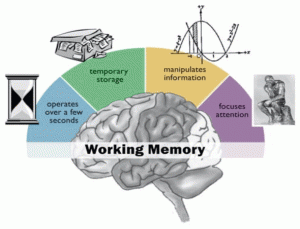 Working memory holds the contents of what we are paying attention to at any one time. It is a small active memory store that provides the information we process when thinking, making decisions, solving problems and performing other cognitive tasks. Working memory is like your conscious brain’s bandwidth, it is a measure of the amount of information that can be processed at any one time. The more bandwidth the higher your cognitive performance.
Working memory holds the contents of what we are paying attention to at any one time. It is a small active memory store that provides the information we process when thinking, making decisions, solving problems and performing other cognitive tasks. Working memory is like your conscious brain’s bandwidth, it is a measure of the amount of information that can be processed at any one time. The more bandwidth the higher your cognitive performance.
Research has shown that simple training tasks can expand our working memory and increase fluid intelligence or our reasoning and problem solving capabilities.
The training, called the n-back technique, presents you with a series of sounds or pictures. In the case where n = 2 you want to identify the sound or image that is just like the second one in the series. Once you master that you move up to n = 3 and identify the sound or image that is just like the third one in the series. As the value of n increases you must hold more and more information in your working memory. This exercises it like a muscle.
Doing n-back training for 20 minutes a day for 20 days produces a measurable improvement in reasoning and problem solving power. And it seems the level of improvement you get increases with the amount of training you do. According to research presented at the May 28th American Association for Psychological Science Meeting:
“These new studies demonstrate that the more training people have on the dual n-back task, the greater the improvement in fluid intelligence,” Jonides said.
They also found the effect works for children as well as adults and that single n-back training (focusing on the images OR the sounds) works as well as dual n-back training (focusing on the images AND the sounds).
N-back training is a perfect technique for a iPhone or mobile app. Unfortunately, I cannot find one. To get the technique a try, go to this free web-based application. To dig a bit more you might want to try The Brain Workshop but you have to download software to your computer.
Interested to hear from readers that do n-back training. What value of n have you reached? How has this type of training impacted your cognitive performance in everyday or professional tasks?
Source for Image: Working Memory
 According to a widely quoted National Science Foundation Study, on average we have 12,000 thoughts per day. And it can run as many as 60,000 thoughts per day. I have been unable to locate the original study. No matter, we have all experienced the constant self talk and flow of ideas that make up everyday experience.
According to a widely quoted National Science Foundation Study, on average we have 12,000 thoughts per day. And it can run as many as 60,000 thoughts per day. I have been unable to locate the original study. No matter, we have all experienced the constant self talk and flow of ideas that make up everyday experience.
How do we mange so many ideas? Are there ways to manage our idea flow that will improve cognitive performance in decision making, self-regulation and creative problem solving?
Well known techniques for managing daily idea flow include journaling, keeping a notepad by your bed and other methods of trying to write them down. There is value in that but it is very low tech. Powerful but simple tools like Evernote, give us a way of quickly capturing our idea flow electronically (phone or computer) and relating it to other on-line documents and information.
The very act of documenting our idea flow slows it down and changes it. We may lose important notions. Fortunately, voice recognition technology has advanced to the point where we can reliably capture our thought by speaking to our phone or computer. Check out the Dragon line of naturally speaking products from Nuance. They have dictation and voice recognition products for every need including the iPhone dictation app shown below.

But will using technology to smoothly capture our thought flows improve our cognitive performance?
There is some evidence it does. For example, in the June 2011 issue of Wired, Clive Thompson argues in his story, Hold That Thought, that voice recognition technology may help us be more creative and over come mental challenges such as writer’s block.
From a general standpoint, having a transcript of all our thoughts in a given day could provide many insights. For example, we could identify patterns of self-talk that are negative or see bits of important ideas that might otherwise have been lost.
This summer I am planning to do some simple experiments at Northwestern University with students in my cognitive design class on capturing and analyzing daily though flows. I will blog the results. In the meantime, I am interested to hear from readers on how you capture daily thoughts and use that to improve cognitive performance.
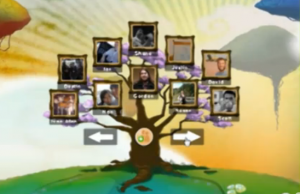 Want to grow your Next Brain? Try GardenMind an intriguing new approach that combines cognitive training, social gaming with optional donations to the World Wildlife Fund (WWF).
Want to grow your Next Brain? Try GardenMind an intriguing new approach that combines cognitive training, social gaming with optional donations to the World Wildlife Fund (WWF).
Your mind is a garden and this metaphor is used to guide how you experience brain training. For example, you play memory games to grow deciduous trees and play language games to grow flowers. You can visit a friend’s garden to provide assistance or offer a friendly challenge. Best of all, contributing to WWF initiatives means animals visit and live in your garden.
Very interested to hear from readers that play GardenMind or are aware of similar brain training platforms.
 The most frequent question I get is from parents or parents to be. They want to know what they should do to develop their children’s brains and cognitive skills. Check out VTech toys (no affiliation). They are guided by a panel of experts and offer toys designed to stimulate learning and cognitive development at all ages from birth to 8 years. You can even search for products based upon your child’s age.
The most frequent question I get is from parents or parents to be. They want to know what they should do to develop their children’s brains and cognitive skills. Check out VTech toys (no affiliation). They are guided by a panel of experts and offer toys designed to stimulate learning and cognitive development at all ages from birth to 8 years. You can even search for products based upon your child’s age.
From baby’s learning laptop to the classic Peek-at-Me Bunny and the award winning sit-to-stand alphabet train (shown) each toy is designed to create a teachable moment that ranges from learning about body parts to mastering language. While the impact of specific toys might be unclear, the basic principles they are based on seem sound.
Very interested to hear from readers that have used brain building toys.
Categories:
Child Tags:
toys
 The health benefits of regular laughter are broadly known. Check out Laughter is the Best Medicine for a quick review.
The health benefits of regular laughter are broadly known. Check out Laughter is the Best Medicine for a quick review.










